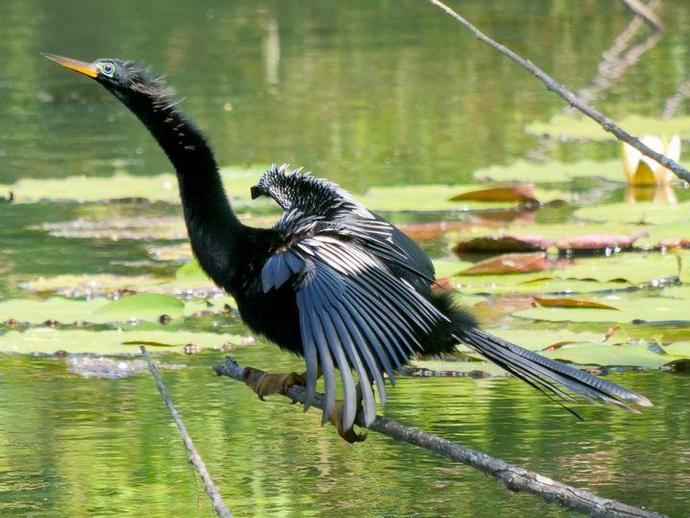May 14, 2021
It's time for today's edition of #BenInNature presented by our friends at Carter Bank & Trust!
Here's my favorite find from my vacation last week: an anhinga (Anhinga anhinga leucogaster), spotted at Brick Pond Park in North Augusta, South Carolina!
While stray anhingas will sometimes venture farther north, the northern extent of their range is generally recognized as southern South Carolina, meaning this isn't a bird we're likely to spot here in Virginia. They can be found in the extreme southeastern U.S. along the coast all the way down to South America, which is where they're most common.
Anhingas are sometimes called snakebirds because they often swim with only their long necks poking from the water. They use their beaks to spear fish and other small prey, and they're capable of diving and pursuing prey thanks to their webbed feet.
Unlike ducks, pelicans, and other birds that are often spotted near water, anhingas don't produce oil to waterproof their feathers. While this prevents them from floating on the water, it does make it easier for them to fully submerge and hunt for food. However, once they get out of the water, they have to dry their feathers in order to fly. As seen in the photo, they do this by extending their wings and holding their backs to the sun!
These are pretty large birds, and their wingspan can measure nearly four feet across! These birds also have one very unusual feature that they share with only a handful of other species: they do not have nares, which is the term for the nostrils that you see on a bird's beak! Instead, anhingas are purely mouthbreathers. Just don't call an anhinga that to its face.
ABOUT #BenInNature
Social distancing can be difficult, but it presents a great opportunity to become reacquainted with nature. In this series of posts, Administrator of Science Ben Williams ventures outdoors to record a snapshot of the unique sights that can be found in the natural world. New updates are posted Monday - Friday, with previous posts highlighted on the weekends. This series of posts is made possible thanks to the support of VMNH Corporate Partner Carter Bank & Trust (www.cbtcares.com).
NATURE PHOTO IDENTIFICATIONS
If you discover something in nature that you would like help identifying, be sure to message us right here on Facebook with a picture (please include location and date of picture) and we'll have our experts help you identify it!

 Hours & Admissions
Hours & Admissions Directions
Directions

